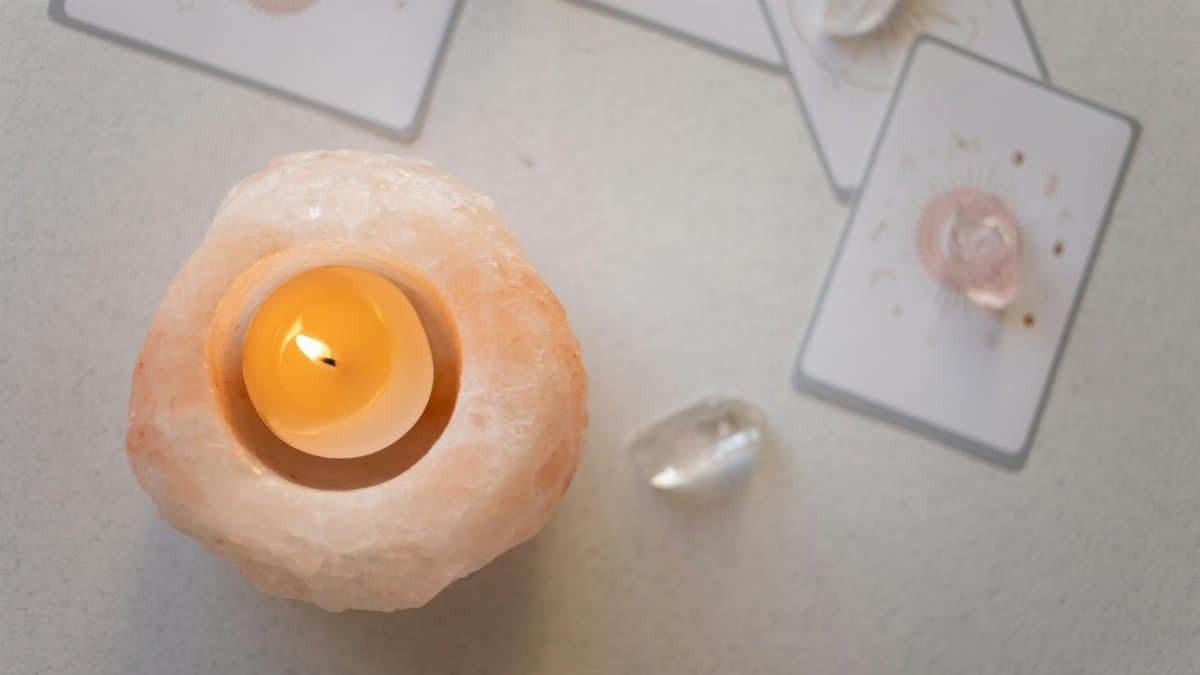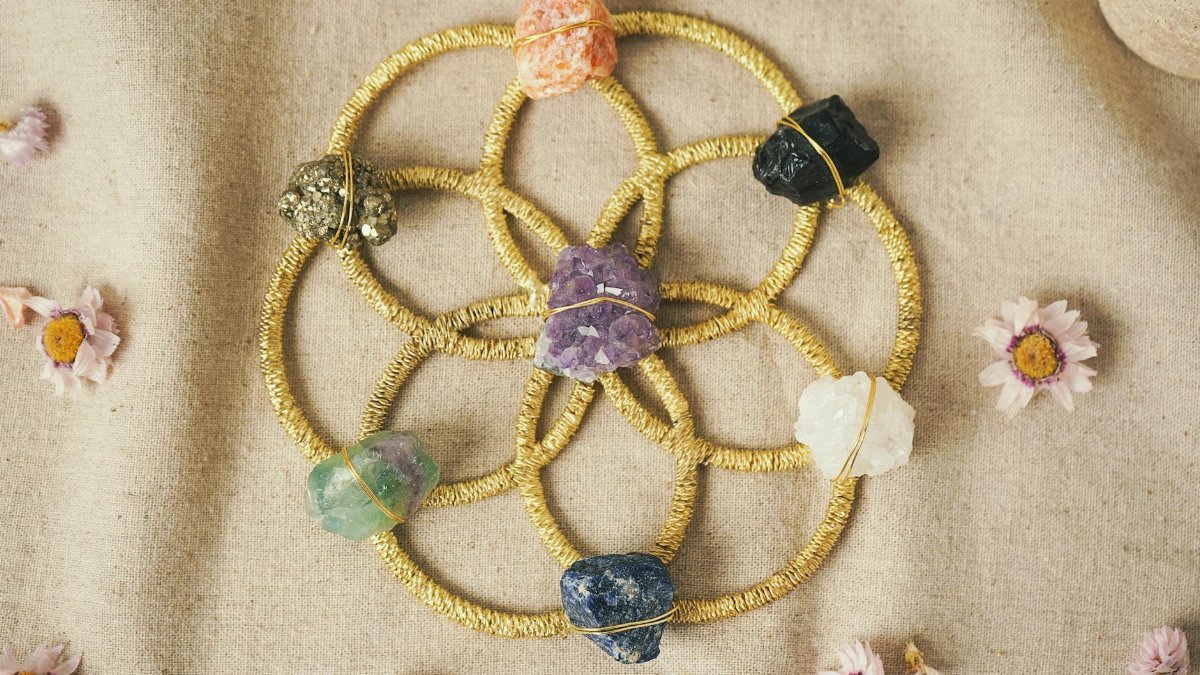Imagine a quiet corner of a home in Portland, Oregon, where a small group gathers around a table. On it lies an intricate pattern of shimmering stones—quartz, amethyst, and citrine—arranged with deliberate care. They’re creating what’s known as a crystal grid manifest, a practice blending ancient wisdom with modern intention-setting. For these individuals, it’s more than aesthetics; it’s a tangible way to channel desires into reality. Across the U.S., this ritual is gaining traction among those seeking clarity in a chaotic world. From wellness retreats in California to online communities sharing grid designs, the appeal lies in its promise of focus and transformation. But how does arranging crystals in specific formations amplify personal goals? Let’s unpack the layers of this growing trend and explore why so many are turning to these sacred layouts in 2025.
1. Understanding the Basics of a Crystal Grid

At its core, a crystal grid is a purposeful arrangement of stones, often aligned with sacred geometry, to harness energy for a specific intent. Think of it as a blueprint for manifestation. The “manifest” in crystal grid manifest refers to the act of bringing thoughts or desires into physical form. Practitioners select crystals based on their properties—rose quartz for love, black tourmaline for protection—and place them in patterns like circles or the Flower of Life. This isn’t random; the geometry is believed to amplify the stones’ vibrations. A 2021 survey by the Pew Research Center noted a rise in Americans exploring alternative spiritual practices, with many citing a need for personal empowerment. Crystal grids fit neatly into this search, offering a hands-on approach to intention.
Take Sarah, a 42-year-old teacher from Austin, who started using grids after a divorce. She described laying out a simple spiral of clear quartz to “clear mental clutter.” Over weeks, she felt a shift—not magic, but a renewed ability to prioritize. Stories like hers underscore why the practice resonates: it’s a tactile anchor in an intangible world.
2. Choosing the Right Crystals for Your Intent

Not all crystals are created equal when it comes to manifestation. Each stone carries a unique energetic signature, or so the belief goes, tailored to different goals. Want abundance? Citrine, often called the “merchant’s stone,” is a popular choice. Struggling with self-doubt? Amethyst might be tapped for its calming clarity. Research into the psychological effects of such practices is limited, but a study from the National Institutes of Health suggests that rituals, even symbolic ones, can reduce anxiety by fostering a sense of control. For grid-makers, selecting stones becomes a deeply personal act, almost like curating a playlist for a life chapter.
The process isn’t just about picking pretty rocks. It’s about resonance. Many describe holding a crystal to “feel” if it’s right. This intuitive step sets the tone for the entire grid, aligning the user’s mindset with their aim before a single stone is placed.
3. Harnessing Sacred Geometry in Grid Layouts

Why does shape matter in a crystal grid manifest? The answer lies in sacred geometry—patterns like the Seed of Life or Metatron’s Cube that are thought to mirror the universe’s structure. These designs aren’t just visually striking; they’re believed to create energetic pathways. A hexagonal grid might focus on balance, while a spiral could symbolize growth. While scientific evidence for these effects is scarce, the psychological impact of order and symmetry is well-documented. A report from American Psychological Association highlights how structured environments can ease stress, which may explain why arranging a grid feels grounding to so many.
Creating these layouts often becomes a meditative act. The precision required—aligning stones just so—pulls focus away from daily noise, centering the mind on intention. It’s less about cosmic forces for some and more about mental reset.
4. Setting Intentions with Precision and Clarity

A grid without purpose is just decor. The heart of crystal grid manifest lies in intention-setting, a step that demands specificity. Vague hopes like “I want to be happy” rarely cut it. Practitioners are encouraged to refine their goals—say, “I seek confidence in public speaking”—and infuse that clarity into the grid. Some write their intention on paper, placing it beneath the central stone. Others speak it aloud during setup. This mirrors techniques in cognitive behavioral therapy, where articulating goals boosts commitment, as noted by resources from the Mayo Clinic.
One online account shared recently described the relief of narrowing a sprawling worry into a single, actionable phrase for their grid. That focus, they said, felt like “finally seeing through fog.” It’s a reminder that the power often lies in the process, not just the stones.
5. Activating Your Grid for Maximum Impact

Once assembled, a crystal grid isn’t considered “active” until it’s charged with energy. Methods vary—some use visualization, imagining light connecting each stone, while others tap a central crystal with a wand to “wake” the grid. This ritual can feel theatrical, but it serves a purpose: marking a beginning. It’s akin to lighting a candle before meditation—a signal to shift gears. The act often deepens emotional investment in the goal, a factor psychologists link to sustained motivation.
Timing can play a role too. Many align activation with lunar phases, like a new moon for beginnings. Whether or not celestial cycles influence outcomes, the rhythm of such timing offers structure. For busy lives in 2025, that alone can be a quiet gift.
6. Placement and Environment for Energy Flow

Where a grid lives matters as much as how it’s built. A cluttered desk corner won’t do; practitioners stress a clean, intentional space. Some choose an altar, others a windowsill catching morning light. The idea is to avoid energetic “static”—distractions that dull focus. Feng shui principles often creep in here, emphasizing harmony in surroundings. While empirical data on energy flow is nonexistent, the effect of a tidy, dedicated space on mental clarity isn’t. It’s about curating calm.
Consider a Michigan-based accountant who keeps a small grid near her workspace. She admits it’s less about mysticism and more about the visual cue to pause and refocus during stressful days. Her grid’s spot, bathed in natural light, doubles as a reminder to breathe.
7. Maintaining and Recharging Your Grid

A crystal grid manifest isn’t a set-it-and-forget-it tool. Dust gathers, intentions shift, and energy—however one defines it—can stagnate. Regular care involves cleansing stones, often with sage smoke or moonlight, and reassessing the grid’s purpose. If a goal is met, some dismantle and rebuild with a new focus. Others refresh weekly, realigning stones to keep the vibe “alive.” This upkeep mirrors self-care routines, reinforcing discipline.
It’s not uncommon to hear of grids neglected during life’s busier patches, only to be revived when needed. That flexibility is part of the appeal. A grid waits, ready to be a mirror for whatever internal work comes next.
8. Integrating Grids into Daily Life

Crystal grids don’t have to be a standalone practice. Many weave them into broader routines—meditation, journaling, or even morning coffee rituals. A grid might sit beside a gratitude list, each stone a prompt for reflection. Others use pocket-sized grids, tiny layouts carried for on-the-go grounding. In a world of constant digital hum, especially in 2025, this tactile practice offers a counterbalance.
The integration isn’t always seamless. Skeptics in one’s circle might scoff, and time constraints can sideline the habit. Yet for those who persist, the grid becomes a quiet ally. It’s less about proving a mystical effect and more about carving out space for what matters—a small, stubborn act of prioritizing self amid life’s rush.
